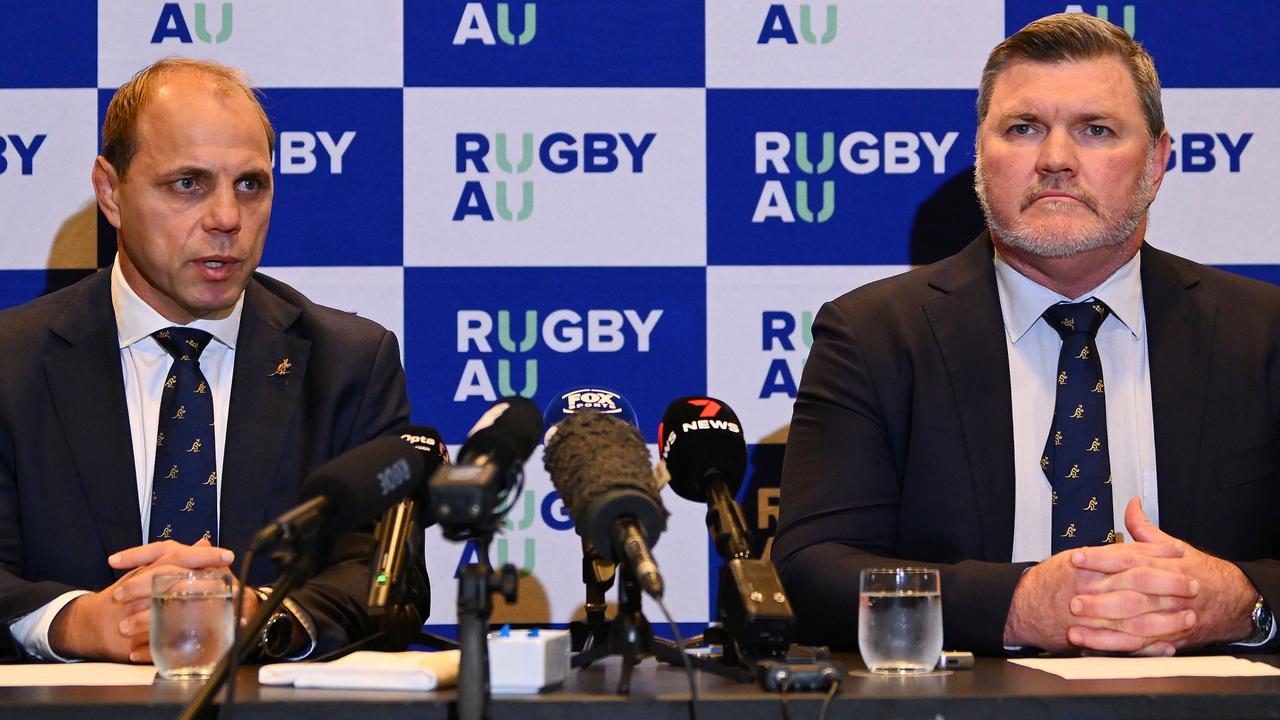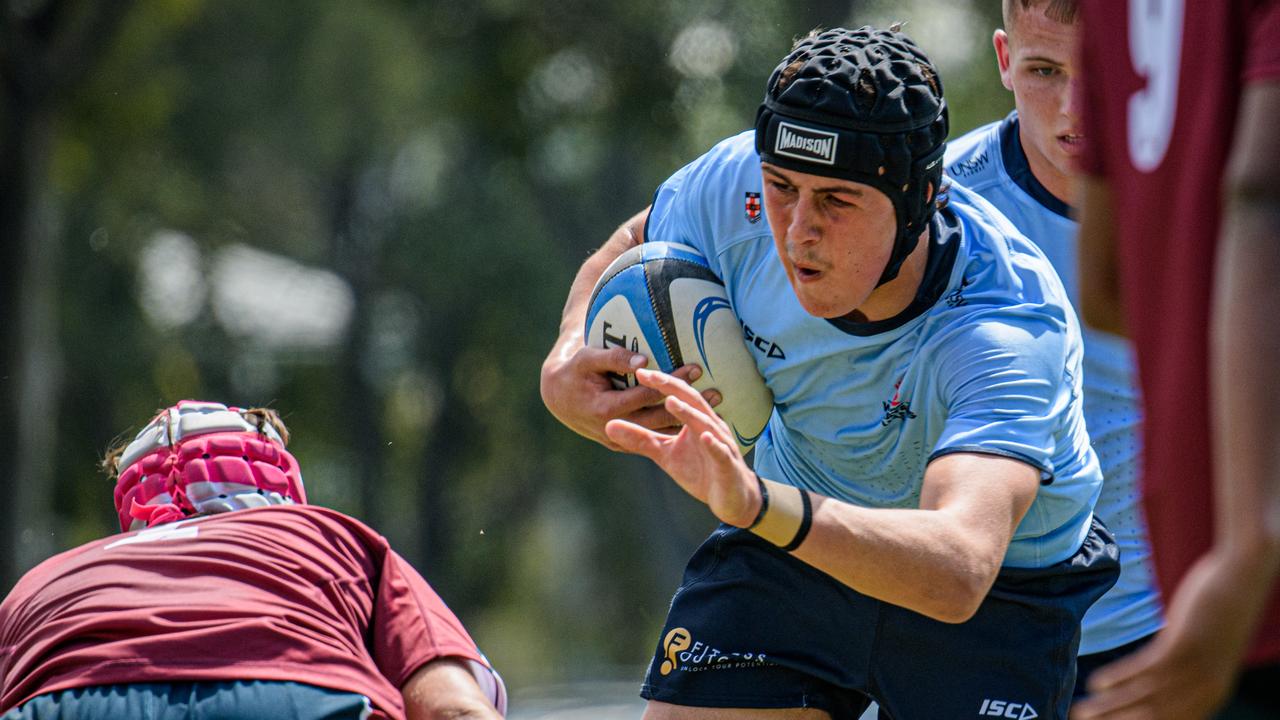Rugby union bans tackles above sternum in battle against concussion and rugby league
Rugby Australia has announced a dramatic new tackle law with the code hoping a raft of league players will defect, writes JAMIE PANDARAM.

Rugby
Don't miss out on the headlines from Rugby. Followed categories will be added to My News.
Chest-height tackles are now banned under a dramatic change to rugby’s tackle laws for all players below Super Rugby level, as the code aims to reduce concussions and bring in more participants.
From 2024, in competitions including Sydney’s Shute Shield, Queensland Premier Rugby, community and school rugby, players must tackle below the sternum of the ball-carrier.
Any tackle that is deemed level with the sternum or higher will be penalised, with Rugby Australia introducing a new law 9.13 that states: “Dangerous tackling includes, but is not limited to, tackling or attempting to tackle an opponent above the line of the sternum even if the tackle starts below the line of the sternum”.
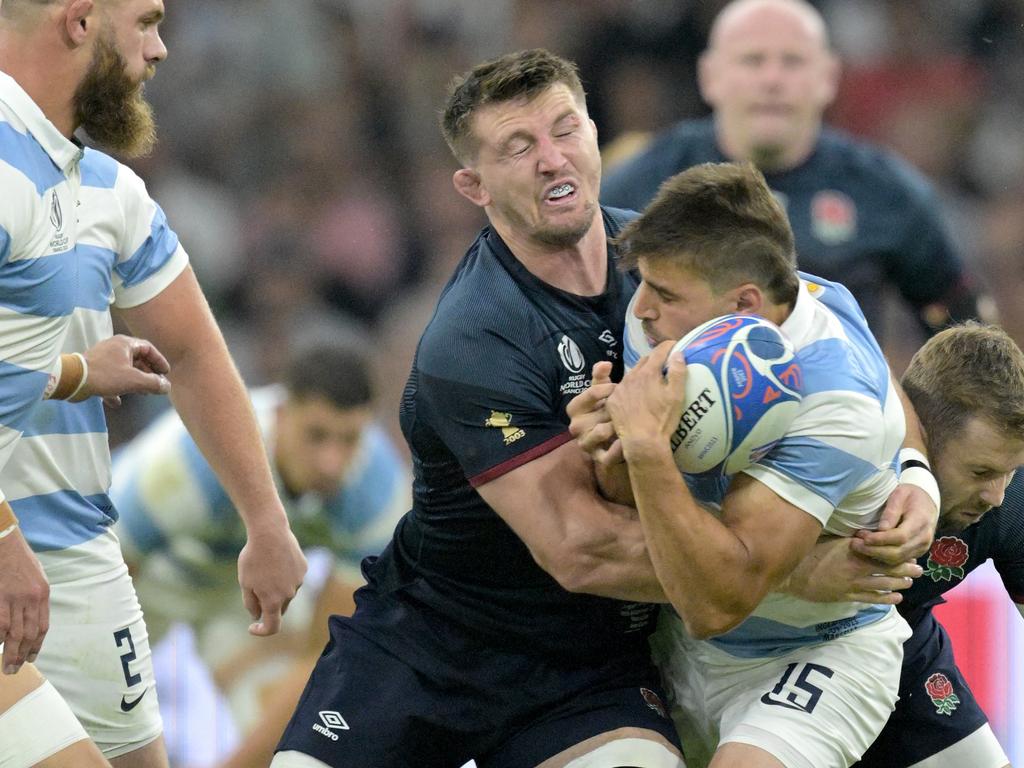
RA is following the lead of other nations who are trialling lower tackling laws including New Zealand, South Africa, England, France, Ireland, Scotland and Wales, and research from those countries show significantly reduced rates of head injuries. The two-year trial starts in February and will finish at the end of the 2025 season, with World Rugby to assess the results and potentially use the research to guide law changes in the professional arena, including Test matches.
But for now, the “belly tackle” only applies to amateurs and club rugby players. The significant lowering of the tackle height gives rugby a chance to pip rugby league as a potentially safer option, with parents growing more concerned about lasting impacts of head knocks.
“That undoubtedly will be a big difference between us and rugby league, here in Australia we are the first sport to get out in front of this,” RA’s general manager, community rugby, Michael Procajlo said.
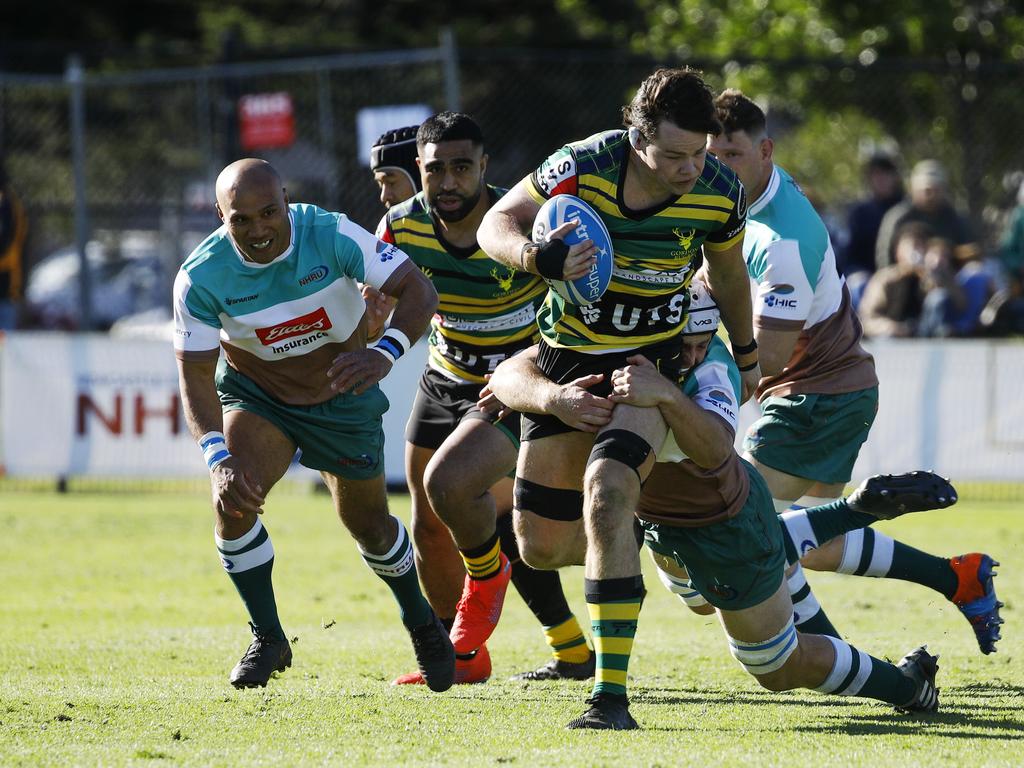
“We are joining a lot of unions overseas, but it is a big step in Australia and we’ll see in the coming years whether we have a few people coming across from other codes.”
And as more than 300 former professional players launch a class-action lawsuit in England and Wales against rugby union for concussion-related issues, including CTE (chronic traumatic encephalopathy), the game can ill-afford to move slow on head protection.
“When you see all the other major unions across the world joining this trial, and Rugby Australia’s not, we’d have to have a pretty good reason as to why we’re not and I don’t think we can come up that reason,” Procaljo said.
“Once you see you can reduce the risk [of concussion] by 4.2 times, if then we didn’t go down that path, maybe we are opening ourselves up, but it certainly wasn’t a legal factor.
“The legalities and lawsuits happening overseas wasn’t a factor in our decision, but maybe it would be used by lawyers in years to come.”

Former Wallaby Scott Fava, now coaching the ACT Brumbies Super W team, said the law changes overseas had resulted in more offloads and faster rugby.
“The game hasn’t gone soft, we’re looking at trying to create a product that works for participation and entertainment value,” Fava said.
“The stats already show there’s 64 per cent more offloads, so if we adopt that from a game point of view, and we see more offloads and the entertainment value of the game increase as a consequence of these law changes, why not?”
Preliminary data in South Africa has shown a 30 per cent reduction in concussions, while France recorded a 64 per cent reduction in head-on-head contact – as well as a 14 per cent increase in participation on pre-Covid levels.
Officials will encourage young rugby players to learn to tackle in “the green zone”, the area below the sternum and above the waist, which research shows is the area least likely to result in concussion.
Wallaroos and NSW Waratahs captain Piper Duck believes this will not eliminate the eye-catching dominant tackles that attract viewers. “The biggest hits I’ve seen have been within that area,” the 22-year-old flanker said.
“Someone can’t run without legs, and the biggest girls on the paddock, if you can hit their legs, hit that breadbasket, you are straight away in a far more dominant position.
“If you’re too upright, you can’t make a dominant hit, you can’t make a physical tackle because you haven’t got power to go through the ball.”
But tacklers will also be protected from ballrunners who dip low and also use their elbows or forearms leading into contact.
If a tackler is bent at the hips and waist at the point of contact, and the ball-carrier dips low and is caught above the sternum, they and not the tackler will be penalised. Any ball-carrier who makes contact with a rival’s head with their forearm or elbow will also be penalised.
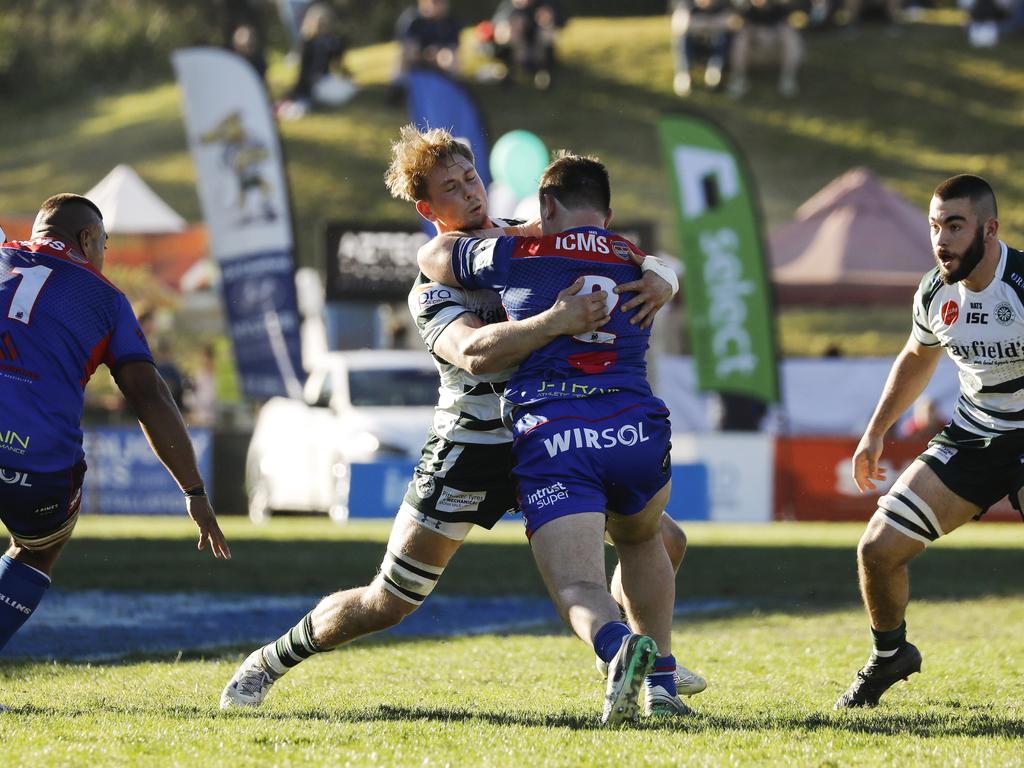
The new law applies to ball-running only, and will not be enforced at rucks and pick-and-goes, where the ballrunner usually starts from a low position. The current laws around no contact to the head apply for ruck-and-maul play.
Newsletters have been sent out to all local clubs and schools alerting them of the rule change.
RA’s head of community match officials, Graham Cooper, urged players, coaches and parents to be patient next season, with a sharp rise of penalties expected to be blown by referees as players adjust to the lower tackle height.
RA chief executive, Phil Waugh, added: “Research from around the world has clearly identified safety as the number one issue preventing fans and potential players from taking up the game.
“Obviously it is impossible to remove all risk from the game, however we firmly believe that promoting safer tackle techniques, and reducing the risk of head contact and concussion will lead to an even safer game. I am confident our players and coaches at all levels of the game will continue to work on safe and effective tackle technique.
“This is firmly in the best interests of the game, however there may be an adjustment period for players and match officials, and I would ask for patience and respect between all parties as we embark on this journey.
“In the French trial, they saw a significant increase in penalties in the first year of the trial, followed by a substantial drop in those numbers over the next two years as players and officials adjusted to the new measures.
“We will continue to ensure that any decisions that have the potential to impact the game are driven by research and evidence that prioritise player safety.”
More Coverage
Originally published as Rugby union bans tackles above sternum in battle against concussion and rugby league





